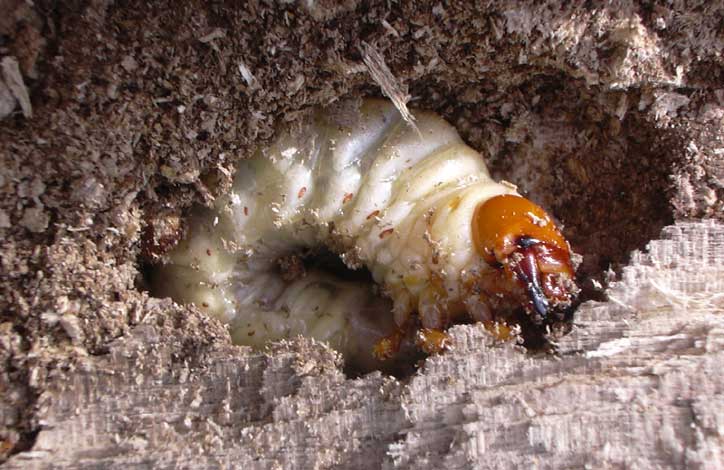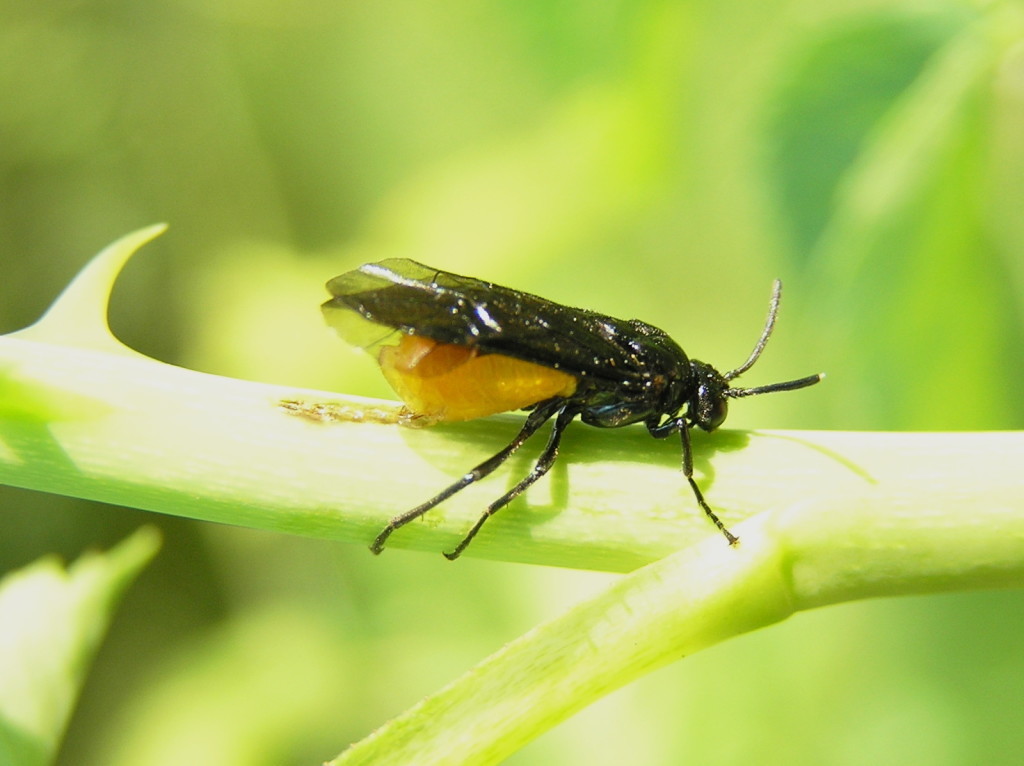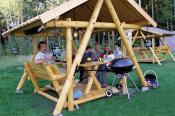Search
Login
Recommended
Pests of roses - how to recognize and destroy
Roses in the garden are susceptible to attacks by harmful insects, damaged plants begin to hurt, immunity to fungal diseases decreases, and abundant flowering ceases. Measures taken in time to destroy harmful insects will help to avoid the above problems, roses are planted for special aesthetic pleasure, we will not spoil it with the presence of aphids, ticks and other pests on noble flowers.
Content:
Beneficial insects
Actively participating in the extermination of pests are the beneficial insects that we have not noticed, and experienced gardeners often trust them to save their plants.
For example, a ladybug larva in three weeks of growing up will destroy up to 600 aphids; an adult insect eats more than 5,000 pests in its life. Aphids and larvae of the female beetle, an adult female beetle in color resembles a wasp, but it is absolutely harmless to humans.
The lacewings, earwigs and rider will also help you, by the way, the larvae of the rider destroy not only aphids, but also caterpillars of various pests. If you take care of the birds in your garden in winter, they will certainly thank you with their zeal to collect small aphids and caterpillars from plants.
Now consider aphids and other harmful insects in more detail, how to recognize them and how to process roses from pests.
Aphid
The first pests of roses in the spring are aphids. Eggs of future aphids winter on shoots and fallen leaves, in spring, aphids settle on young leaves, buds and shoots of roses, every 10 days the insect gives new offspring. Weakened aphids of a rose slow growth, buds do not open, leaves fall, the bush loses resistance to frost. Reproduction of aphids is supported by ants, they carry pests throughout the garden area.

Effectively against aphids, spraying with garlic - onion infusion at the rate of 300 g of crushed root crops in 3 l of water, after 5 hours, the infusion is diluted to 8 l. The treatment is repeated every 5 days until the pest disappears completely.
Spider mite
Such pests of roses as spider mites are very invisible, the female hibernates in the soil, in the spring lays eggs on the underside of the leaf. Ticks feed on the sap of the plant, leaves become yellow spots and fall off. Mass defeat of roses contributes to drought, also spider mites are pests of indoor roses and greenhouse varieties.
In the event of a room rose affliction, the struggle with them consists in frequent watering, since the pest does not like moisture, it is recommended to wipe the rose leaves dry after watering.
The fight against the tick on roses in greenhouses or on the open ground is based on spraying with chemical preparations, but sometimes they can’t cope .. At-hand tools come to the rescue, for example daily spraying of roses, after winter with a solution of laundry soap or garlic infusion.
Leaflet
In May, in the garden you can see small moth-like butterflies, if so, check your roses, they may have caterpillars or twisted leaves - houses with this pest inside. The leaf caterpillar eats leaves and rosebuds, which leads to the death of the bush.

The detected folded leaves must be removed, the visible caterpillars must be collected and destroyed, and then the bushes should be sprayed with a weak saline solution. The new emergence of caterpillars on shrubs requires serious intervention - spraying with insecticides.
Maybug Larvae
May larvae feed on the roots of many young plants, including roses. Larvae live under those plants where there is humus or manure. Digging the soil with the addition of crushed red pepper will destroy the pest, it will not damage the roots, and the larvae will not like it. Roses are also poured under the root with a solution of ammonia (2 tablespoons per 10 liters of water).

Thrips
Small black pests only 2 mm long will destroy the entire rose garden if they are not noticed on time. Thrips feed on plant sap, and 2-3 generations of insects appear per season. Pest control is hampered by the fact that their eggs are resistant to pesticides, even if the gardener pickles thrips, new insects with immunity to chemistry will appear in a week, this is why the fight against them is not limited to even three sprayings.
Larvae and adult thrips winter in the soil and leaves, pests wake up in April and lay the first offspring in the upper part of the plants, which in turn infect the leaves and buds of roses.
Seen insects can be frightened off by frequent watering, they do not tolerate moisture, but such watering will lead to fungal diseases. Gardeners are interested in the question of how to spray roses from pests, if not chemistry? Against thrips, there is an effective method - to spray roses early in the morning with nettle infusion or biological products. Insects are hiding inside the rosebuds to make sure that they are missing, inspect the flowers and leaves well.
Sawfly
The caterpillars of the yellow sawfly feed on leaves and rosebuds, if light brown spots are visible on the leaves, these caterpillars have eaten the upper side of the leaf until they are transparent. In severe cases of attack, roses lose not only an attractive appearance, but also resistance to diseases, the leaves fall off.

Adult sawflies appear from mid-spring, laying eggs on the underside of the leaf, larvae are born and begin to spoil the plants, after about a month the caterpillars pupate, adult insects appear in late summer.
Organic methods of control are regular inspection of plants, spotted eggs can be crushed or populated leaves can be removed immediately, soft-bodied eggs, they can be easily destroyed with the help of a strong pressure of water. Processing roses from pests with pesticides is recommended only if the caterpillars densely populated the plants, biological preparations at this stage are powerless, as sawflies damage the plants inside.





